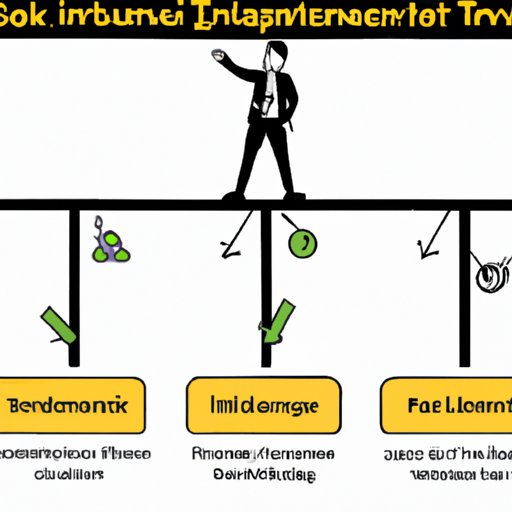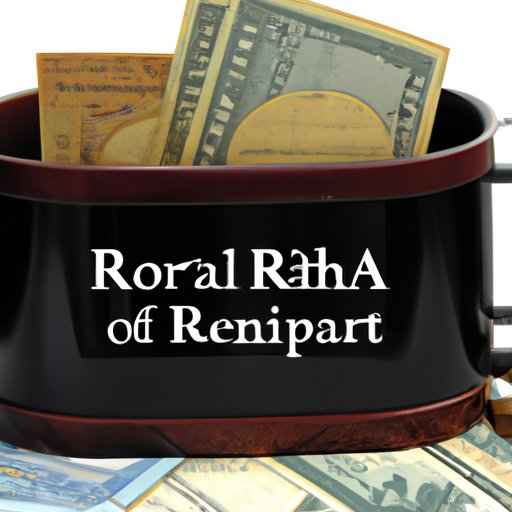Introduction
A Roth IRA is an individual retirement account (IRA) that allows you to save for retirement while enjoying certain tax advantages. Contributions to a Roth IRA are made after taxes have been paid, meaning that qualified withdrawals in retirement are not subject to income taxes. This makes a Roth IRA an attractive option for those looking to maximize their retirement savings.
The benefits of a Roth IRA include tax-free growth on earnings, no required minimum distributions at age 70 ½, and the ability to withdraw contributions at any time without penalty. However, there are also some drawbacks to consider. Contributions to a Roth IRA are limited to $6,000 per year ($7,000 if you’re 50 or older), and income limits may apply. Additionally, withdrawals of earnings prior to age 59 ½ may be subject to taxes and penalties.

Research the Types of Investments Available in a Roth IRA
Once you have decided to open a Roth IRA, it’s time to research the types of investments available. The most common types of investments in a Roth IRA are stocks, bonds, mutual funds, exchange-traded funds (ETFs), real estate investment trusts (REITs), and certificates of deposit (CDs). Each type of investment has its own risks and rewards, so it’s important to understand the differences before making any decisions.
Stocks
Stocks represent ownership shares of publicly traded companies. They can offer higher returns than other investments, but they also carry more risk. Stocks are usually best suited for investors with a long-term outlook who are willing to accept the potential for losses in exchange for the possibility of higher gains.
Bonds
Bonds are essentially loans that are made to governments or corporations. They typically offer more stability than stocks, but they also have lower potential returns. Bonds can be a good choice for investors who want to maintain a balance between risk and reward.
Mutual Funds
Mutual funds are a collection of stocks, bonds, or other securities that are managed by a professional fund manager. They offer diversification and can help reduce risk, but they also come with higher fees than other investments. Mutual funds are a good choice for investors who want to minimize risk but still have the potential for growth.
Exchange-Traded Funds (ETFs)
Exchange-traded funds (ETFs) are similar to mutual funds in that they are collections of stocks, bonds, or other securities. However, ETFs are traded on exchanges like stocks, which means that they can be bought and sold at any time during the day. ETFs offer the potential for higher returns with less risk than stocks, but they also come with higher fees.
Real Estate Investment Trusts (REITs)
Real estate investment trusts (REITs) are a type of security that invests in real estate. They can offer higher returns than other investments, but they also come with higher risk. REITs are a good choice for investors who are comfortable with the risks associated with real estate investing.
Certificates of Deposit (CDs)
Certificates of deposit (CDs) are issued by banks and offer a fixed rate of return over a set period of time. They are generally considered to be low-risk investments, but they also offer lower returns than other investments. CDs can be a good choice for investors who want a safe, secure investment.

Understand Your Investment Goals and Risk Tolerance
Before you begin investing in a Roth IRA, it’s important to understand your financial goals and assess your risk tolerance. This will help you determine what types of investments are right for you and ensure that you don’t take on too much risk.
Identify Your Financial Goals
The first step is to identify your financial goals. Are you looking to save for retirement, buy a home, or just build wealth? Knowing your goals will help you decide which types of investments are best suited for your needs.
Assess Your Risk Tolerance
It’s also important to assess your risk tolerance. Are you comfortable with the potential for losses in exchange for the possibility of higher returns? Or do you prefer investments with less risk and lower returns? Knowing your risk tolerance will help you choose investments that are right for you.
Compare Investment Options and Choose an Investment Vehicle
Once you have identified your financial goals and assessed your risk tolerance, it’s time to compare investment options and choose an investment vehicle. This includes considering fees, taxes, and other costs, as well as researching the various types of investments available. It’s important to remember that all investments involve some degree of risk, so it’s important to choose an investment vehicle that fits your needs and goals.
Consider Fees, Taxes and Other Costs
When choosing an investment vehicle, it’s important to consider fees, taxes, and other costs. These can vary greatly from one investment option to another, so it’s important to do your research and compare the costs associated with each option. Additionally, it’s important to understand how these costs can affect your overall returns.
Choose an Investment Vehicle
Once you have compared the costs and researched the different types of investments, it’s time to choose an investment vehicle. Consider the risks and rewards associated with each option, as well as your financial goals and risk tolerance. Ultimately, the decision is up to you, so make sure you choose an investment vehicle that fits your needs and goals.

Monitor and Rebalance Your Portfolio Regularly
Once you have chosen an investment vehicle, it’s important to monitor and rebalance your portfolio regularly. This involves analyzing your performance to determine whether your investments are meeting your goals, and rebalancing your portfolio if necessary. Rebalancing helps to ensure that your investments are in line with your financial goals and risk tolerance.
Analyze Your Performance
To monitor your performance, it’s important to analyze your investments on a regular basis. This involves looking at the performance of your investments over time and comparing them to your financial goals. If your investments are not meeting your goals, it may be time to rebalance your portfolio.
Rebalance Your Portfolio
Rebalancing your portfolio involves adjusting your investments to ensure that they are in line with your financial goals and risk tolerance. This may involve selling some investments and buying others, or simply adjusting the amount of money you are investing in each type of investment. It’s important to rebalance your portfolio regularly to ensure that your investments remain in line with your goals.
Conclusion
Investing in a Roth IRA can be an effective way to maximize your retirement savings. To get started, it’s important to research the types of investments available, understand your investment goals and risk tolerance, compare investment options, and choose an investment vehicle. Additionally, it’s important to monitor and rebalance your portfolio regularly to ensure that your investments remain in line with your goals. By following these steps, you can maximize your retirement savings and enjoy the benefits of a Roth IRA.
(Note: Is this article not meeting your expectations? Do you have knowledge or insights to share? Unlock new opportunities and expand your reach by joining our authors team. Click Registration to join us and share your expertise with our readers.)
